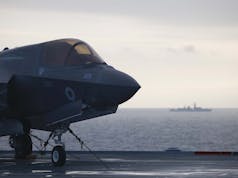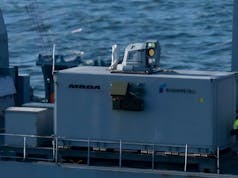A series of live exercises at Portland Port in Dorset has tested how integrated sensor technologies could respond to coordinated underwater and aerial threats against critical infrastructure.
Over four days in mid-June, UK-based firms Wavefront Systems, MARSS and Forcys conducted a staged series of intrusion attempts designed to simulate real-world attacks against a port environment.
The exercises involved stealth diver insertions and coordinated aerial drone activity, with observers invited to watch how detection and command systems responded in real time.
The trials centred on the pairing of Wavefront’s Sentinel Intruder Detection Sonar (IDS) with MARSS’ NiDAR command and control platform. Sentinel IDS is designed to detect and classify underwater incursions, while NiDAR acts as a multi-domain surveillance system, integrating data from sonar, radar, RF, and electro-optical/infrared sensors to provide operators with a single operational picture.
The companies say the purpose of the demonstration was to show how underwater detection can be integrated with broader sensor and command architectures to better reflect the pace and complexity of modern threats. These include the growing challenge of simultaneous attacks from air, surface and subsurface vectors.
Each day’s scenario culminated in a coordinated attempt to breach security using both divers and drones. Attendees, including representatives from defence, maritime security, and government, watched as data was streamed through NiDAR’s interface to track and assess the evolving threat. Organisers say the integration allowed for faster, more coordinated responses to simultaneous threats.
Wavefront also used the event to unveil its new Sentinel Expeditionary Trailer, a portable, self-contained sonar deployment unit designed for rapid installation in expeditionary or temporary port environments.
The event was supported by Forcys, a maritime defence group that advises on integration between technology providers and end users. Justin Hains, Business Development Manager EMEIA at Forcys, said the trial demonstrated how layered awareness across air, surface and underwater domains can improve decision-making. “Timely information is everything,” he said. “What this week proved is that integrated systems give decision-makers the edge they need to act fast and act right.”
Participants from across the defence and security sector attended the trials, with organisers reporting strong international interest in the integrated solution. Paul Badger, Managing Director at Wavefront, said the feedback showed demand for technologies that could not only detect threats, but form part of a wider, connected response framework.
“People didn’t just see what the systems could do individually – they saw the value of an integrated, multi-domain solution operating in the field,” Badger said.
The demonstration comes amid heightened global concern about the vulnerability of ports and undersea infrastructure to sabotage, espionage and asymmetric threats. As tensions rise in both the Euro-Atlantic and Indo-Pacific regions, militaries and critical national infrastructure operators are increasingly looking to close surveillance gaps across all domains, including below the waterline.


![Portland Demo - Wavefront, MARSS & Forcys 2[67]](https://ukdj.imgix.net/2025/06/Portland-Demo-Wavefront-MARSS-Forcys-267-scaled.jpg?auto=compress%2Cformat&crop=top&fit=crop&h=580&ixlib=php-3.3.1&w=1021&wpsize=td_1021x580&s=76eac00081d7fb84f4d0ef72f4968de1)










